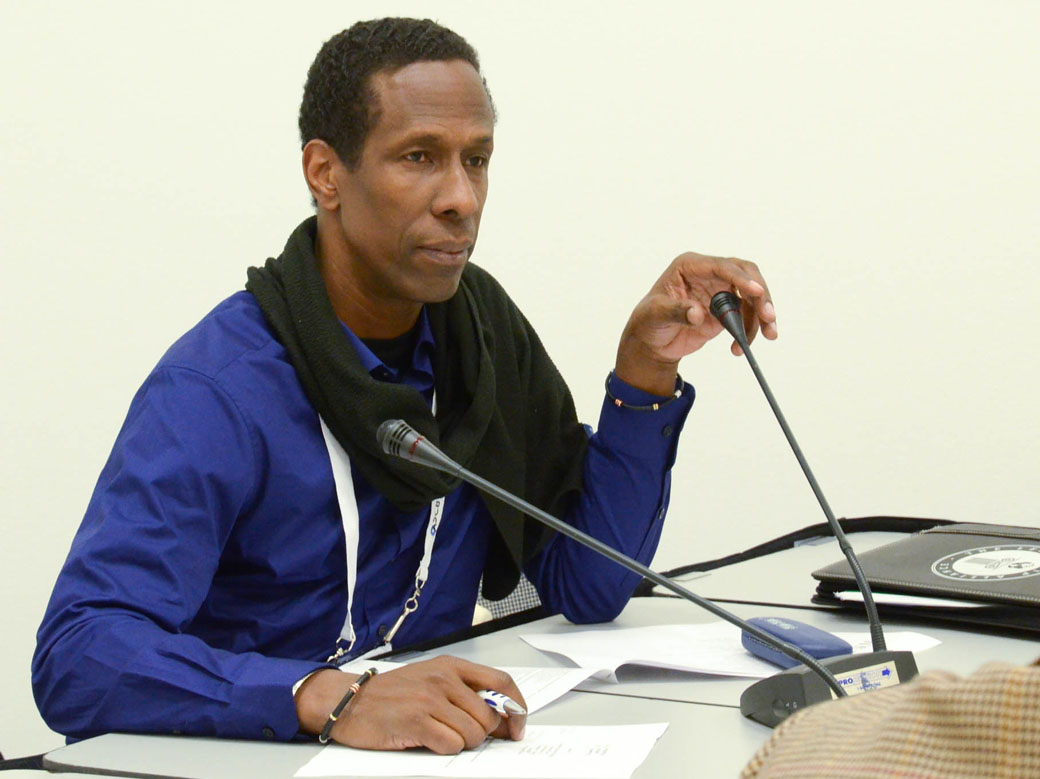
In 1997 the Minorities Affairs Committee (MAC) of the American Society for Cell Biology (ASCB) established the Visiting Professorship Program in hopes of enhancing the research and teaching infrastructure of minority-serving institutions (MSI). A central aspect of the program, funded by the National Institute of General Medical Sciences, is pairing MSI junior faculty members with peers at major research universities, who act as mentors and collaborators for eight to 10 weeks. (Brown biologist Gary Wessel was one such host). MSI faculty then return to continue research in their own labs.
In a new paper published in the journal CBE-Life Sciences Education, Andrew Campbell, a Minority Affairs Committee member, chair of the Visiting Professorship Program and Brown University professor of biology, led a peer-reviwed analysis of the program’s results during the last 14 years. He and his co-authors compared the publications and grant funding of 32 program participants with that of 129 other comparable faculty members at their institutions who did not participate. They found that among program participants, publications and grant funding rose after participation, while the key indicators stayed the same or declined for those who did not participate.
Campbell discussed the paper and program with David Orenstein.
Describe the Visiting Professorship Program and its goals.
The goal of the program is to support junior faculty at MSIs in translating their potential. The program provides them with time, material resources and mentoring by partnering them with faculty at research-intensive institutions.
Then there is a second, less obvious point of the program. We want to reach beyond the visiting professors to also support students. We want to encourage students to become scientists, particularly students who come from groups that are underrepresented in the field. The question addressed is, ‘How do you get a student from one of those small MSIs to see and understand what it is to be a scientist?’ We’ve always talked about students having great role models. But they are at small primarily teaching institutions which are often under-resourced and where they don’t always have access to scientific role models.
What the paper shows is that you can authenticate, in cases where you need to, and enhance in other cases the scientific identity of faculty at minority serving institutions – to help them become role models and scientific mentors for those students. The students look at these faculty not only as teachers but as practicing scientists because they publish and they get grants.
What are the highlights of you found?
In science the coins of the realm are teaching skills, funding, and publications. This paper shows what the visiting professors have or can acquire or develop.
It’s clear that when you give faculty the resources that they need, they become productive. In the case of the visiting professors their publications go up 60 percent compared to their peers. Their funding goes up 10-fold. Those are real, meaningful measures. They also take back what they’ve learned and transfer it to their students in the classroom and in their labs.
You give faculty the resources they need to launch, relaunch, or sustain their research program and they translate on that investment. They produce.
How scalable is this? Can we do more of this?
The NIH has launched a number of initiatives through its Common Fund program. One is called BUILD, which stands for Building Infrastructure Leading to Diversity. This program is designed for small or under-served institutions, including MSIs, to reach out to research-intensive institutions to form partnerships. The other is called NRMN, which stands for National Research Mentoring Network and it is the complement of BUILD. Its role is to develop mentors. Down the road NRMN and BUILD are expected to synergize. The third Common Fund initiative, which is in the works, is the Coordination and Evaluation Center (CEC) that will serve as the integration hub for BUILD and NRMN. So are activities of the Visiting Professorship Program are scalable? I would say yes. Given the NIH’s Common Fund initiatives that are centered around mentoring and partnerships, I would say others do believe that practices as demonstrated in the paper are scalable.
What does Visiting Professorship Program’s success, combined with that of the IMSD program for graduate students here at Brown, say about bringing more minorities into the life sciences pipeline?
The scientific community is like a chainrope which is only as strong as its weakest link. The individual links are the faculty, the postdocs, the graduate students, and the undergraduates. It’s not just faculty training that needs to be supported. Put another way, you’ve got to replenish at all training levels. Training levels are like sequentially connected pools. If we have poor training at the undergraduate level we won’t replenish the pool of graduate students, which in turn means we won’t replenish the pool of postdocs, and we won’t replenish the pool of faculty. Great faculty/scientists eventually retire so we need to cultivate those who will make up the next generation.
IMSD, programs like the Visiting Professorship Program and even the undergraduate summer research program such as those of the Leadership Alliance are all connected. We here at Brown are also looking at outcomes of the undergraduate summer programs that support student interest and pursuit of STEM careers.
